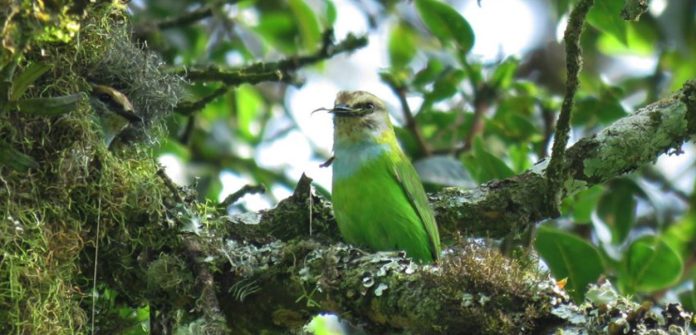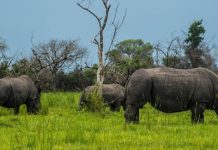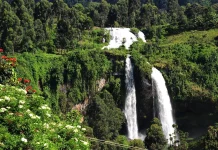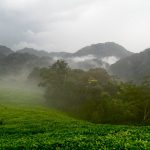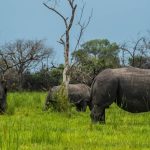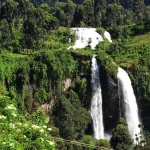Mubwindi Swamp, located within Bwindi Impenetrable National Park in the Ruhija sector, holds a mysterious tale passed down through generations. Translating to “Dark Swamp,” its name reflects the ominous atmosphere surrounding its story.
According to local lore dating back to the 1920s, the Kigezi clan embarked on a journey from the southwest to the north of Kigezi, passing through the forest where the swamp lies. When they reached Mubwindi Swamp, it appeared too vast for them to cross, and with no way back, they found themselves trapped.
Desperate to continue their journey or find a way back, they wandered aimlessly around the swamp for days. As exhaustion set in, they heard a voice emanating from the swamp, believed to be the voices of ghosts. The voice demanded the sacrifice of the most beautiful girl among them in exchange for safe passage through the swamp.
Initially resistant, the elders eventually responded to the haunting voice’s demand after days of fruitless searching. They selected the most beautiful girl among them and, with heavy hearts, threw her into the gloomy waters of the swamp.
Miraculously, after the sacrifice, a path emerged, allowing the clan to cross to the northern side of the swamp. However, when they looked back, the path they had used had vanished, leaving them to settle in the north.
Haunted by the memory of losing their beautiful daughter to the swamp, the clan named the place “Mubwindi bwa Nyinamukari,” signifying the darkness that consumed their beloved girl.
This chilling tale of sacrifice and loss has become intertwined with the identity of Mubwindi Swamp, leaving a lasting impression on the local community and visitors alike. Today, the swamp serves as a reminder of the power of folklore and the mysteries that lie within the depths of nature.
Flora of Mubwindi swamp
Mubwindi Swamp is surrounded by dense stands of moist lower montane forest, and its vegetation is a result of various factors including climate, soil, demographics, and human influence. The swamp consists of deep layers of peat-rich deposits, and pollen data from sediment cores provide insights into the history of montane vegetation.
The pollen record indicates changes in vegetation over time, with interruptions possibly due to sedimentary gaps. Radiocarbon dating, charcoal analysis, and particle size investigations help place this vegetation history within broader discussions about past climates, forest refuges, and human impacts.
Before and after the last glacial maximum, the vegetation around Mubwindi Swamp was different from what we see today. There was an increase in certain plant types like Artemisia, Ericaceae, Faurea, and Stoebe, while others like Ilex, Olea, Podocarpus, and Zanthoxylum persisted.
These persistent taxa may have survived due to favorable terrain or soil conditions. The changes in montane forest composition are believed to be linked to recent shifts towards drier climates, leading to an increase in plants associated with degraded forests and a decline in timber sources.
Fauna in Mubwindi swamp
Within Mubwindi Swamp lies the Mubwindi trail, which offers access to various parts of Bwindi National Park. This trail typically takes around 4-5 hours to complete, showcasing stunning views as it winds through the jungles and slopes of the Bwindi forest.
The Mubwindi Swamp trail treats hikers to vistas of lush valleys and the majestic Virunga Massifs. It serves as a popular route for activities such as birding, gorilla trekking, and nature walks. Along the trail, adventurers may encounter a variety of mammals, including mountain gorillas, black and white colobuses, forest elephants, bushpigs, blue monkeys, bushbucks, and black-fronted duikers.

Moreover, the swamp is home to a diverse array of bird species, including many Albertine endemics. Therefore, bird enthusiasts are often drawn to this trail. It’s advisable to hike with a park ranger, especially for safety in gorilla trekking areas. Additionally, having a knowledgeable bird guide can enhance the birding experience.
Things to do in Mubwindi swamp.
Bird watching
The Mubwindi Swamp is home to around 100 bird species, including the Albertine endemics. Among the species that can be spotted in this area are the African green broadbill, black-billed turaco, tambourine dove, northern puffback, Grauer’s warbler, Rwenzori Apalis, Rwenzori Batis, Gray parrot, coqui francolin, African swift, Ring-necked francolin, Grauer’s broadbill, red-faced crimsonwing, papyrus canary, Oriole finch, blue-headed sunbird, Rwenzori hill babbler, strange weaver, African paradise flycatcher, Elliot’s woodpecker, bar-tailed trogon, and white-headed wood hoopoes.
Whether you’re an experienced birder or a casual observer, the swamp offers an excellent opportunity to witness the beauty of birdlife in its natural habitat.
